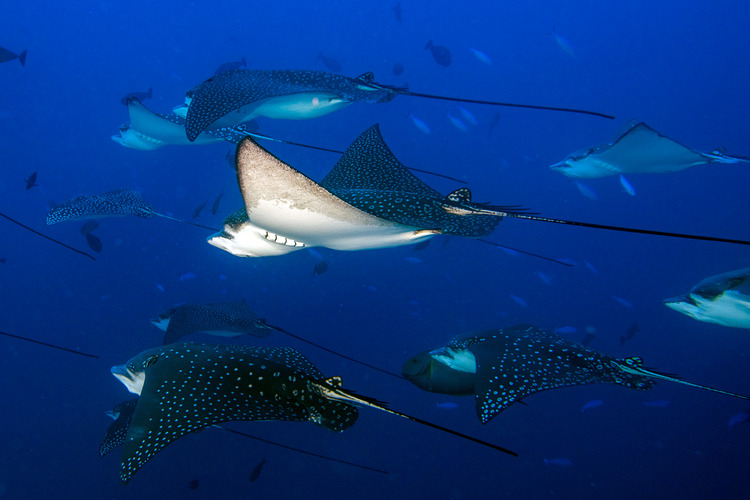
Sharks, rays and chimaeras have declined rapidly due to overfishing – as well as he habitat degradation, climate change & pollution
By
New analysis has revealed populations of chondrichthyan fishes – sharks, rays and chimaeras (a small group of mainly deepwater species) – have declined by more than 50 per cent since 1970 due to overfishing, with the risk of extinction to all three species increasing by 19 per cent.
Enjoying this article? Check out our related marine reads:
More than 1,199 fishes make up the ancient and ecologically group of chondrichthyans, but overexploitation by fisheries along with incidental capture (bycatch) has led to dwindling populations.
Overfishing is a prevalent issue worldwide, with a recent UN analysis finding that almost 38 per cent of fish stocks have been fished beyond sustainable limits across the world – causing a loss of biodiversity as well as serious repercussions for small coastal communities reliant on fishing.
Habitat degradation, climate change and pollution have also contributed to the drop in these aquatic species’ numbers. It is expected that such vast declines will have sizeable impacts on other species and aquatic ecosystems.
‘Sharks and rays are important predators, and their decline disrupts food webs throughout the ocean,’ said Dr Nathan Pacoureau at the European Institute for Marine Studies at Brest University.
‘Larger wide-ranging species connect ecosystems, for example, reef sharks are vital in transferring nutrients from deeper waters to coral reefs, helping to sustain those ecosystems. Rays, meanwhile, are important foraging animals that mix and oxygenate sediments, influencing marine productivity and carbon storage.’

The study also made a sizeable inroad into the conservation of marine life by devising the very first aquatic Red List Index (RLI) for chondrichthyan, which shows trends in overall extinction risk for the species. Although a Red List Index has been created for the conservation progress of land, no such equivalent has been adapted to monitor the ocean until now.
Using the index, researchers were also able to pinpoint the trajectory of species decline: first, shark and ray populations fell in smaller bodies of water, such as rivers and estuaries before moving into oceans and deep waters, where fisheries then capitalised on deepwater shark and skates for the liver oil and meat trade.
Despite the concerns raised in this new study, researchers are keen to highlight how the conservation of sharks and rays is still possible. By lowering fishing pressures to sustainable levels and strengthening the monitoring and governance around fishing, nations can protect the species for generations to come.
It is also hoped that the newly devised RLI will make it easier to track the progress of ocean biodiversity and sustainability, as well as highlight the species and regions most at risk across the world.




